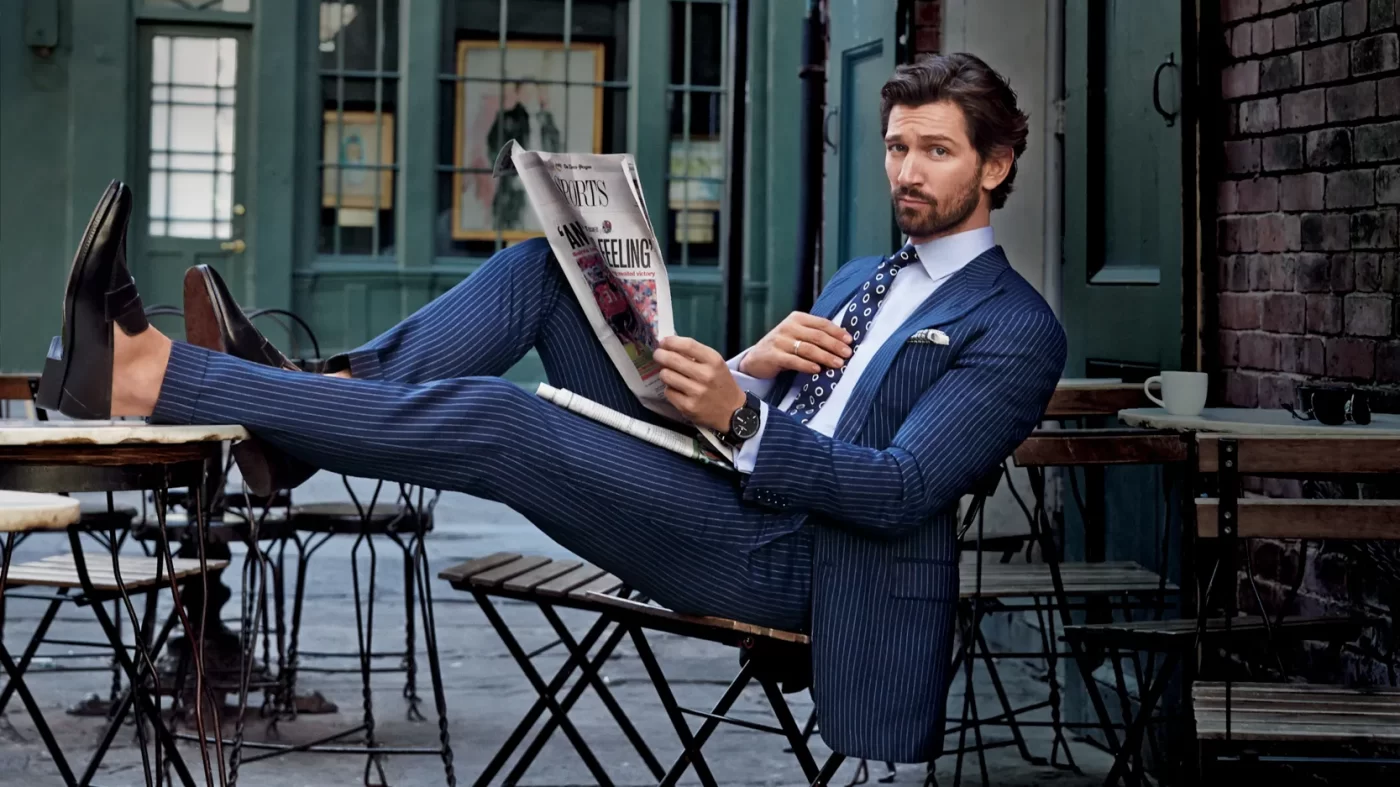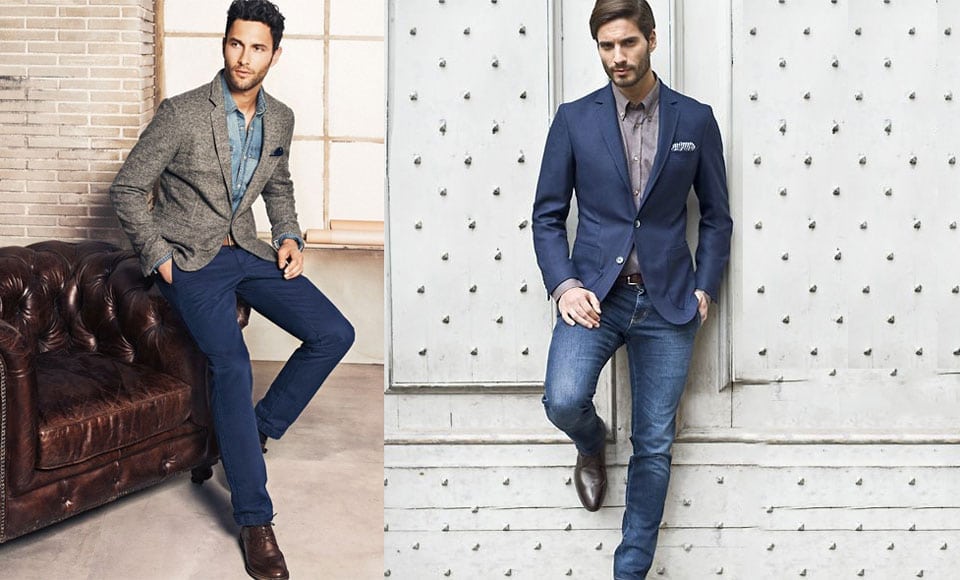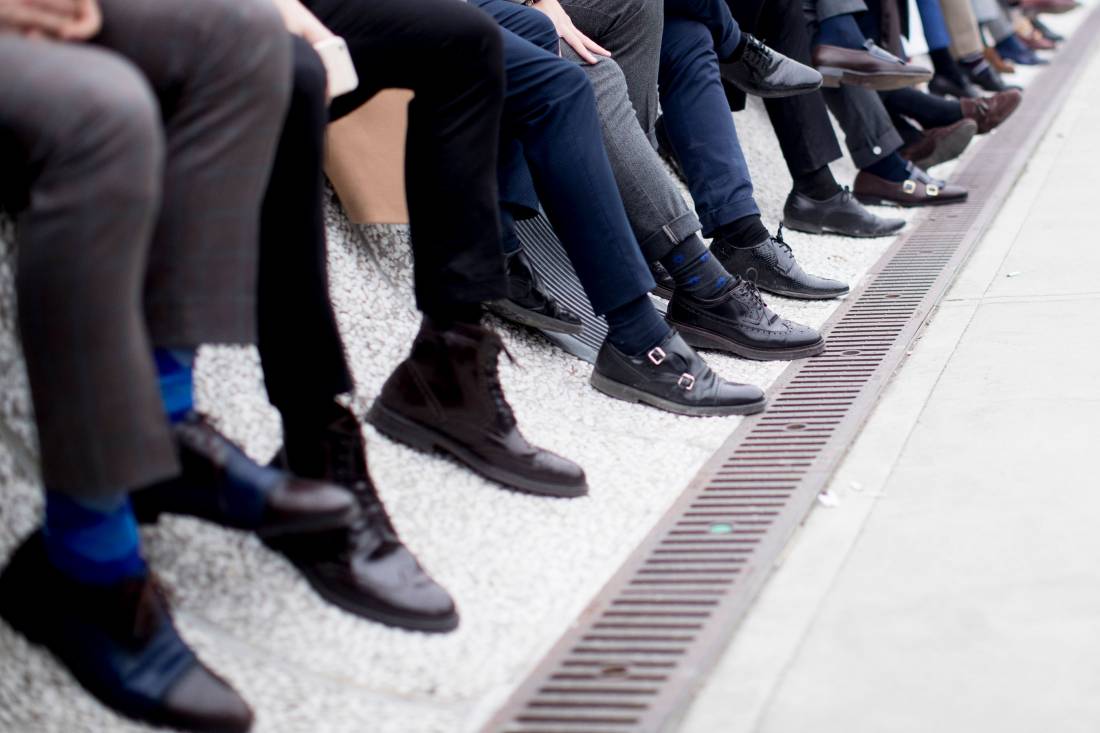Yes – individuality is key, but there are some sartorial must-dos that cannot be ignored for the all-time stylish gent. Here are 8 rules of style you should always follow for turning a good outfit into a great one.
In This Story…
Rule #1 Mix Textures

By definition, texture is the distinctive physical composition or structure of something, especially with respect to the size, shape, and arrangement of its parts. In fashion, the easiest and most effective way to texturise a look is with different fabrics – layering heavier fabrics on and around lighter ones to make the bolder materials stand out. Texture also comes with layering colour, pattern, and shine with what you wear.
Smart Casual
Cable knit or loosely woven sweaters are a great way to add texture to an outfit. Pair with raw denim jeans and derby shoes in suede (the most textural leather there is). Linen is one of the best and lightest ways to add texture. As a blazer, rock linen over an off-duty shirt and pant look for instant smart casual texture.
Formalwear
A pleated trouser is an easy way to add some texture to a boring suit. As a separate, pleated pants in wool blend go well with a grainy tweed wool blazer. Balance out the look with a crisp white shirt. Wear the neck open with a loose paisley neck tie or done up with a woven silk business tie. One of the best menswear brands for texture this season is L.B.M 1911. And this guide to suit fabrics is also your friend.
Casual
Leather jackets over tees adding density and shine to a casual look. Relaxed chinos in synthetic cotton blend give your bottoms a mid textural density and slight shine (the more synthetic the shinier it gets) and then calf skin leather Chelsea boots (with studs for extra bump) or tassel moccasins (material texture there) are superior footwear options for reworking the animal hide in unison with the jacket. David Beckham rocks leather texture the best.
Sportswear
Satiny nylon puffer jackets sit well over matte cotton jersey sweatshirts to balance out the shine. For the bottoms, gym shorts made from synthetic shine work off the jacket, or neoprene track pants (think wetsuit material) add architectural angles to typical loungewear. Tees and singlets should be kept flat and clean-lined. Check Moncler and H&M for some sports luxe inspiration.
Rule #2 Know Your Size

Style founds itself on correct fit and knowing how to dress for your body type. Suits and jeans are the two main culprits of ill-fit (as well as buying tees that are Euro-trash tight).
Suits
See a professional tailor who knows their trouser ‘breaks from suit ‘seats’, and the difference between peak and shawl lapels. Getting a customised suit alleviates all the stress. In short, suits must be flat and cut sharp on the shoulder and when buttoned it shouldn’t pull. Pants should sit on the hip bones naturally, without sagging at the rear, while the length of the trouser shouldn’t bunch at the ankle and keep the leg slim fit. Freshen up by reading our first suit buying guide.
Jeans
Besides skinny jeans, which should be bought quite slim to allow for the eventual stretch, all denim should be comfortable but snug on the waist. A thumb should be able to slip in the waist band without too much force. Here is a well-rounded guide to designer denim, to get you started.
Rule #3 Replenish White Basics Regularly

Basic whites replenishment, like the garments themselves, is simple. From underwear to socks, singlets to socks, go through your drawers each month and throw out any items that are unpresentable: grey, stained, ripped, unsightly. Get rid of them. Uncertain? Toss it anyway. Holes don’t provide extra ventilation; and stains are far from artistic or sentimental; they portray a lazy approach to style and signal poor hygiene for anyone who has to witness them. Even if you undergarments remain hole-free for several months, replenish every season regardless. Basic whites look better bright. Need fresh inspiration? Here’s our insider’s guide to men’s underwear.
Rule #4 Keep One Button Open

Buttons are made to be fastened, right? Not always. With the exception of shirts, the polo and of obviously pants, shorts and jeans, one button should be left undone at all times. This style rule relates to blazers and suit jackets, really. When seated, an open jacket stops bunching and allows free movement, and while standing at least the bottom button of jacket needs to be undone. For a two-button jacket, fasten the top button; while a three-button suit should be limited to either the middle or top two buttons. To avoid the garment looking stretched, only button the middle.
Rule #5 Know How To Wear & Tie A Tie

First of all, pick the right tie for the right shirt and the right occasion. Then learn how to tie it. (Check Youtube for tutorial videos depending on knot you’re after). Master mistakes include a tie tied to short or too long; a flimsy looking knot that does not fill the gap between the collar, or a knot that shows any part of the narrow end of the tie. Aim for the tip of the tie to skim your belt buckle and make sure the knot sits like a button against the collar. Avoid novelty ties and please, do not tuck the tie into your trousers.
Rule #6 One Statement-Accessory Per Outfit

Similar to the overt branding #3 rule, accessories should be complementary and not take control of the outfit. Mix and match subtle accessories throughout an outfit – such as a metallic watch, signet ring and silver lapel pin – but two of the three need to be minimal, and take a back seat to the shining glory of the third. We’re fans of a classic watch for any occasion to balance out the bling from other precious metals on your body. With materials, checkered pocket square and matching tie are perfectly suited, but keep the silk macro-printed scarf or jewel-encrusted tie pin when your playing plain-tie games.
Rule #7 Keep Footwear Occasion-Appropriate

Formal occasions will always require a well-polished dress shoe – either derby or oxford or brogue version of the two. In leather (calk skin is nice) and black is the safest bet, especially if wearing a tux. For suits, mix it up with dark browns or even tan and add texture with a smooth suede or patent leather.
Casual wear is just that – relaxed, but not ‘anything-goes’. While sneakers are king, go for a retro style to play things up and like dress shoes, muddy, tattered trainers with broken laces and holes, are a big ‘no’. Espadrilles in canvas or driver loafers are great weekend shoes, while thongs should stay at the beach. Sandals are the the next step up but them keep masculine (no gladiator impersonations, please).
Smart casual is all about the shoe. White sneakers pair will with blazers and jeans and even a casual suit. Leather moccasins are perfect and opt for no socks for a day event. Pop-coloured derbys or oxford styles brighten up a look and go for a chunky sole, from time-to-time.